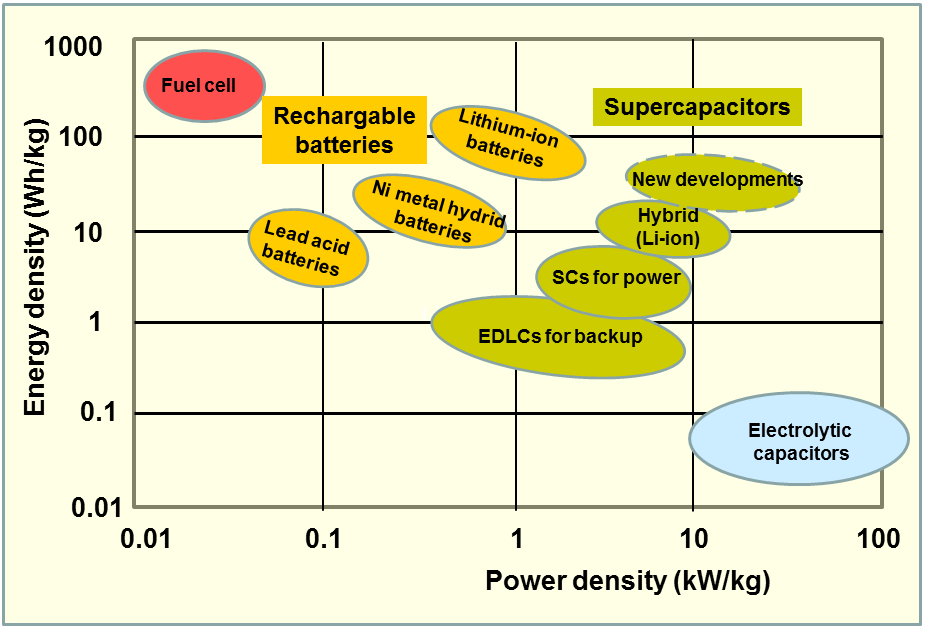I think ‘huge amount of energy’ of climb compared to cruise is overstating it a bit. For example, an O-540 is a 250hp engine used in larger singles and light twins. At 100% power and full rich (takeoff settings), it will consume about 25 gallons per hour (gph) typically.
Once you are in a climb you would throttle back to 75% and lean the engine, which gets you about 16-17 gph. Finally, at 65% cruise at altitude you might be burning 11 gph or so. Absolute economy cruise can get you down to somewhere around 9 gph.
So let’s look at a typical flight:
Takeoff (call it 5 mins): 25gph * 5 min = 2.1 gal
Climb (15 min * 16 gph) = 4 gal
Cruise (2 hr * 9 gph) = 18 gal
VFR Reserve (45 min * 9 gph) = 12 gal
So for a legal 2 hour flight, we’d need 36 gallons of fuel. If we used a supercapacitor to replace gasoline for takeoff, we reduce our fuel need to 33.1 gal. Without the reserve requirement (which doesn’t affect charging time) we go from 24 gal to 21.9. Not a huge difference.
A gallon of gas has about 33.75 kwh of energy. So all else being equal, you would need 1215 kwh of batteries. The gas has a weight of about 6.3lbs/gal, so the gas weighs about 227 lbs. The best energy density I’ve seen for Lithium Ion is about 260 Wh/kg So if we wanted to replace the gas in the plane with batteries, al, else being equal you’d need 4673 kg of batteries for that flight.
Going to supercapacitors only lowers the battery weight by 259 kg, minus the weight of the supercapacitors. Maybe a 5% difference in the end.
A typical single that uses an O-540 light Beech Bonanza might have an empty weight of 2000-2500 lbs. So the batteries alone weigh more than 4 times the weight of the entire airplane.
Of course this is just the starting point, and you have to adjust for higher efficiency of electric motors, etc. But the ratios don’t really change.
Supercapacitors are very useful for certain applications. Perhaps the higher instantaneous power will allow for more efficient electric motors or something. But they won’t save electric planes, which still require major breakthroughs in efficiency and energy density to be practical for all but niche applications.
The two applications I’ve seen so far: A very light electric training plane for use in teaching takeoffs, landings, and pattern work. It has maybe a half hour to 45 minute duration, with no reserve (which it doesn’t need since it’s staying around the airport), and a conversion of a De Havilland Beaver which is used for island hoppjng in BC with a typical flight duration of only 15-30 mins.
Now if you could power one of those Beavers for 15 mins on supercapacitors, you could cut the charge time in half for each trip, which might make it worthwhile. But again, that’s a niche application.

